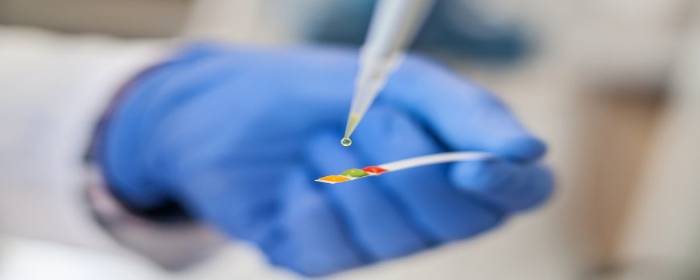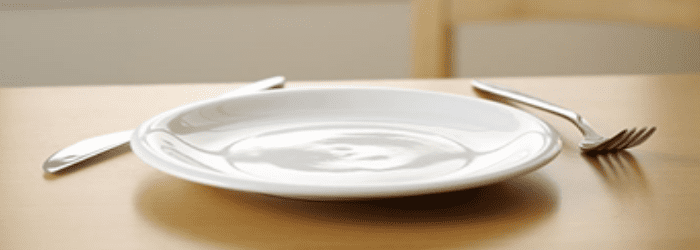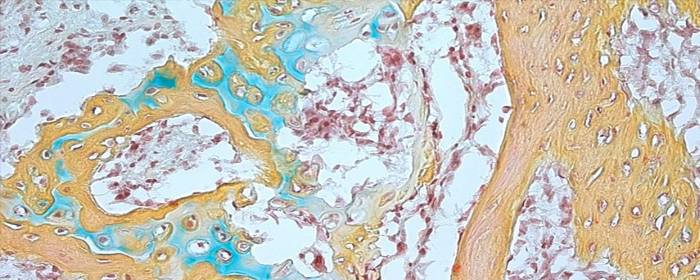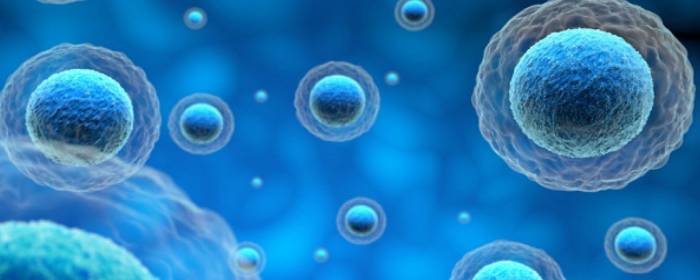
by admin | Dec 17, 2018 | Aesthetics, Stem Cell Therapy
Researchers
have observed that the pH inside of certain stem cells affects their ability to
proliferate and differentiate. These cells include mesenchymal stem cells and
pluripotent stem cells, all of which have important applications in
regenerative medicine. It is therefore important that pH be optimized to ensure
that these stem cells can proliferate and differentiate so
that they can be as useful as possible when utilized for therapeutic purposes.
A recent review, published in Current Problems in Dermatology, explored the importance of pH to stem cell function as well as the factors that influence pH. According to the authors, a protein known as the sodium hydrogen exchanger regulates intracellular pH and impacts both the proliferation and differentiation of different types of stem cells. When pH is changed, either within the cell or outside the cell – where the cell is exposed to the change in pH – stem cell functions includingmaintenance, self-renewal, and pluripotency are altered.
The effect of pH in stem cells is highly relevant for skin conditions and therefore for the practice of dermatology. According to the reviewers, research on how the sodium hydrogen exchanger and pH levels affect skin stem cells (also known as epidermal stem cells) and their behavior could enable the discovery of new interventions to improve the use of stem cells in skin therapies. This research would be particularly relevant for skin conditions like melanoma, psoriasis, and wound healing because the movement and proliferation of stem cells are keyissues in these conditions.
Reference: Charruyer,
A. & Ghadially, R. (2018). Influence of pH on skin stem cells and their
differentiation. Current Problems in
Dermatology, 54, 71-78.

by admin | Dec 12, 2018 | Stem Cell Therapy
Stem cell therapy is used for a broad range of applications, including the treatment of injuries and chronic conditions. Before undergoing this form of therapy, many patients are naturally inclined to explore any possibilities which could enhance the effectiveness of treatment. One option which is sometimes posed to patients is voluntary fasting – but is there really any benefit to fasting prior to stem cell treatment?
What the Research Says
In May of 2018, MIT biologists announced that they’d made a groundbreaking discovery: according to their research, it appeared that fasting could boost stem cells’ regenerative capacity. In an animal study, fasting spurred cells to break down fatty acids instead of glucose, which stimulates stem cells to become more regenerative.
Yet, the evidence only showed the metabolic switch taking place in the intestinal stem cells. After mice fasted for 24 hours, the researchers removed intestinal stem cells and grew them, finding that the fasting doubled the cells’ regenerative capacity.
Unfortunately, while this finding could hold value for patients recovering from gastrointestinal infections or other conditions affecting the intestine, as of yet, there is no concrete evidence which suggests it could benefit patients receiving stem cell therapy for other conditions. For instance, someone who is undergoing stem cell therapy to treat a musculoskeletal injury may likely yield no benefit from fasting, as the enhanced regenerative effects have only been observed in intestinal cells.
Further Studies Are Needed
Aside from the study’s limited scope, the research leader himself also indicated that the findings are still too narrow for drawing concrete conclusions. When interviewed for a publication in Medium, senior author of the study and assistant professor of biology, Omer Yilmaz, said that while stem cells do indeed use fat for energy to improve function, “the next step is to work to understand why that is.” He also added that “with these types of interventions, there’s never one simple answer.”
For now, there appears to be too much uncertainty to recommend fasting prior to stem cell therapy. Because these findings have not been observed in any humans, and those that have been observed were concentrated to intestinal cells, anyone who is receiving stem cell therapy can consider that eating beforehand is possibly unlikely to play any role in altering the results of their treatment.

by admin | Dec 3, 2018 | Osteoarthritis, Stem Cell Research, Studies
The human skeleton is made up of bone, cartilage, fat, nerves, blood vessels, and bone marrow. While the skeleton is usually strong and vibrant in youth, it changes considerably with age. Many people, especially women, experience demineralization of bone called osteoporosis. Most of us will suffer from painful, stiff, arthritic joints either from osteoarthritis or rheumatoid arthritis or both. While some of the diseases of bone and joints have specific treatments, none of them helps to restore bone and joints to their younger state. If one could reintroduce skeletal stem cells into the body, that could all change. Excitingly, researchers have recently isolated human skeletal stem cells from bone and other tissues.
At first glance, this breakthrough may not seem so surprising. One might wonder: didn’t we already have stem cells that form bone and cartilage? The answer is yes, but with an important caveat. Before researchers recently isolated human skeletal stem cells, the only stem cells that could be used to produce bone and cartilage were rather unpredictable. In addition to bone and cartilage, the mesenchymal stem cells that have been long used to form these tissues could also produce fat, muscle, fiberglass, blood vessel cells, and other tissues. In other words, the stem cells were broadly multipotent and, by extension, could not easily be used for a specific purpose, like mending bone or repairing an arthritic joint. That is why the recent discovery of these particular skeletal stem cells is so important.
The researchers isolated skeletal stem cells from various human tissues, mainly bone. They then used the skeletal stem cells to regrow bone and/or cartilage. Not only did the stem cells produce bone and cartilage in the first animal they tested, but they could retrieve stem cells from that animal and then cause bone to regrow in a second animal. This means that the skeletal stem cells have the capability of reproducing themselves.
The same researchers also discovered that when a skeleton is injured, such as in a bone fracture, the number of skeletal stem cells in that area increases dramatically. This makes sense since these cells are used to repair and regrow bone. It is also a promising result because it suggests that stem cells could be used to accelerate bone and joint healing in humans.
Scientists not directly involved in this research heralded this finding as “an extremely important advance.” However, they also acknowledge that more work needs to be done before skeletal stem cells can be routinely used in patients with orthopedic conditions. Nevertheless, these results are an exciting development in the field of stem cell research and orthopedics.
Reference: https://www.sciencenews.org/article/humans-have-skeletal-stem-cells-help-bones-and-cartilage-grow

by admin | Nov 30, 2018 | Health Awareness
Regenerative medicine seeks to restore the functionality of cells, tissues, organs, or genes. In particular, stem cell therapy is among the most promising forms of regenerative medicine. This is due to the fact that stem cells are not specialized cells and can, therefore, transform into any cell or tissue with which they come into contact, including that of muscle, tendon, bone, and ligament. From supporting regrowth of meniscal cartilage in the knee to the self-renewal of central nervous system (CNS) tissue, stem cell therapy has shown a potential option of treatment for a broad range of conditions and injuries.
Stem cell therapy is an emerging regenerative medicine option for those who have sustained the central nervous system (CNS) damage including traumatic brain injury, stroke, and neurodegenerative disorders such as multiple sclerosis. CNS injury is characterized by an inflammatory response, molecular imbalance, cell death, and cyst and scar formation. Researchers suggest that co-therapies, such as physical rehabilitation, could help be a potential booster for their stem cell therapy treatment outcome.
Studies have shown stem cells’ ability to aid in CNS recovery but may also suggest that while significant improvement is made, the treatment is often not enough to completely recover CNS functionality without further intervention. In conjunction with physical therapy, stem cell therapy could produce stronger results. Targeted exercises can produce beneficial effects at the anatomical and physiological levels, thereby positively influencing neural stem cell pools and improving stem cell therapy outcomes. Exercise has been shown to augment stem cell transplantation following muscular injuries in certain studies, but further research is needed to determine exactly how physical therapy and stem cell treatments can be used to support optimized recovery on a case-by-case basis.
Moving forward, it is suggested that physical therapy could help as a supplement to stem cell therapy. By partnering these two therapeutic approaches, patients may be able to potentially improve their treatment outcomes as well as enhancing functionality and quality of life.

by admin | Nov 28, 2018 | Stem Cell Therapy, Wharton's Jelly
Perinatal stem cells have been attracting attention globally in recent years due to their potential in regenerative medicine. These stem cells come in many forms, due to the wide variety of potential sources for these cells. Perinatal stem cells, for instance, may be umbilical cord-derived hematopoietic stem cells, amniotic epithelial cells, amniotic fluid stem cells, or chorionic mesenchymal stem cells. All sources, nonetheless are considered biological waste and are therefore usually discarded after delivery of babies.
Importantly, perinatal stem cells, despite their origin, tend to share a number of characteristics that make them beneficial in treating conditions. Additionally, unlike other sources of stem cells, retrieval of perinatal stem cells is noninvasive and does not require the ethical considerations that retrieval from other sources may involve. A recent review in Regenerative Medicine has highlighted the potential benefits of perinatal stem cells in therapeutic interventions.
In addition to the relatively easy collection and preparation of perinatal stem cells, these cells tend to be easily harvested and manipulated without harming either the mother or the baby. Upon collection, these stem cells exist in high volume and have greater ability to proliferate than other stem cell types such as bone marrow stem cells. Research has also shown that these cells tend not to lead to adverse immune reactions, though the mechanisms involved in their relationship to the immune system are not well understood.
Given their relative advantages over other stem cell types, perinatal stem cells are well poised to be used in cell-based therapies targeting a wide variety of conditions. Future research will help to define the precise role these cells can play in regenerative medicine and which conditions they may be most useful for.






 St. Petersburg, Florida
St. Petersburg, Florida
